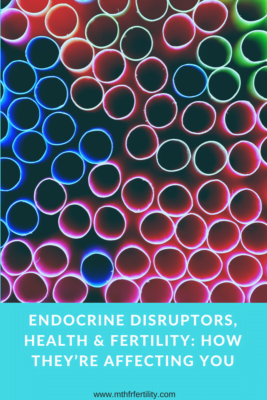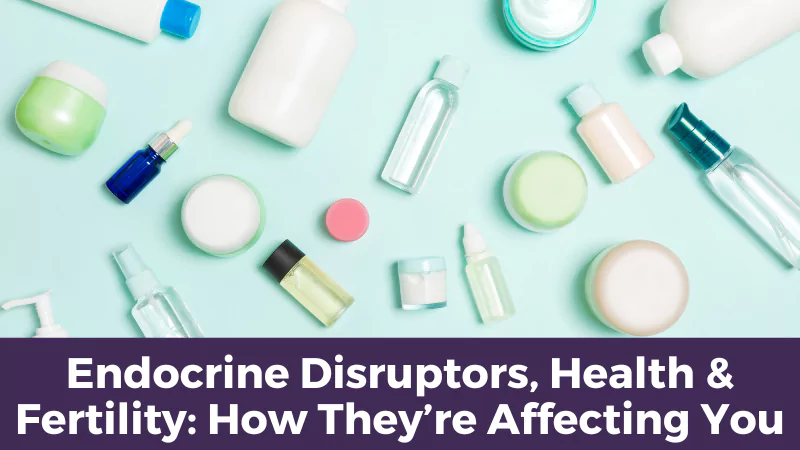Is your home filled with hormone, MTHFR and fertility friendly products?
Endocrine Disruptors (ED) are a group of synthetic, man-made chemicals that have permeated many/most aspects of our modern lives.
Known to have negative effects on the reproductive system, endocrine disruptors have the capacity to damage or kill cells, influence genetic expression and alter the production or balance of estrogen and androgens in the female and male bodies. Hence, ED’s have been labeled with carcinogenic, mutagenic and reprotoxic capabilities.
Those with the MTHFR gene are particularly vulnerable to the negative effects of ED exposure, as one of the primary organs affected by the mutation is the liver, with levels of our primary antioxidant, glutathione, then depleted/ reduced. For anyone with a positive MTHFR mutation, it is paramount to support liver function, phase II detoxification pathways especially. As products containing ED’s only serve to place a further burden upon the liver, it is especially pertinent to avoid these products and remove them from the home.
As defined by the National Institute of Environmental Health Sciences, endocrine disruptors can:
- Mimic or partly mimic naturally occurring hormones in the body like estrogens (the female sex hormone), androgens (the male sex hormone), and thyroid hormones, potentially producing overstimulation.
- Bind to a receptor within a cell and block the endogenous hormone from binding. The normal signal then fails to occur and the body fails to respond properly.
- Interfere or block the way natural hormones or their receptors are made or controlled, for example, by altering their metabolism in the liver.
Source
As fertility and pregnancy require the delicate balance and interplay of both female and male hormones to be working optimally, it is no surprise that any chemical or substance that impacts the body’s hormonal balance will then negatively impact fertility also.
The NIH also states that research does show endocrine disruptors may pose the greatest risk during prenatal and early postnatal development when the fetuses organs and nervous system is developing.
As aptly summarized by the WHO:
- Together, the animal model data and human evidence support the idea that exposure to EDCs during fetal development and puberty plays a role in the increased incidences of reproductive diseases, endocrine-related cancers, behavioural and learning problems, including ADHD, infections, asthma, and perhaps obesity and diabetes in humans.
- In adults, EDC exposures have recently been linked with obesity, cardiovascular disease, diabetes and metabolic syndrome.
- In certain parts of the world, there has been a significant decrease in human fertility rates, which occurred during one generation. There is also a notable rise in the use of assisted reproductive services.
- An increasing number of chemicals to which all humans in industrialized areas are exposed have been shown to interfere with hormone synthesis, action or metabolism.
Below is a list of common endocrine disruptors. It is advised to remove these completely from your home wherever possible and move toward natural and organic alternatives.
Common endocrine disruptors:
- Dioxins
- Bisphenol A/ BPA
- Pesticides & herbicides (e.g. Atrazine & glyphosate)
- Phthalates
- Perfluorinated chemicals (PFC’s)
- Heavy metals e.g. Lead, Mercury & Arsenic
- Organophosphate pesticides
These chemicals are then incorporated into a wide range of products within the home, such as:
- Plastic bottles
- Plastic storage contains e.g. Tupperware
- Tinned food (lining of can contains BPA)
- Detergents
- Plastic Wrap
- Products containing ‘fragrance’ (often contain phthalates)
- Flame retardants
- Foods (consumed from pesticides on food and leaching from BPA and plastic packaging)
- Plastic toys
- Cosmetics and skin care
- Non-stick cookware
- Stain and water resistant coatings on clothing, furniture, and carpet
Endocrine Disruptors, Health & Fertility
Tips for avoiding and eliminating endocrine disruptors:
1/ Eat fresh foods instead of processed, and buy food items loose/bulk over packaged. This will vastly reduce the level of phthalates and BPA the body is exposed to via food packaging.
2/ Buy foods and beverages packaged in glass wherever possible.
3/ Eat organic wherever possible, reducing your exposure to endocrine disruptors in pesticides. Refer to the Environmental Working Group’s list of the Dirty Dozen (best bought organic) and Clean Fifteen (OK to consume in conventional form).
4/ Filter all water that will be cooked with or drunk in the household to remove any pesticides, herbicides or hormonal/pharmaceutical residues present in the water supply. A good quality water filter will also remove chlorine, fluoride, microbes, and impurities.
5/ Avoid all products that use synthetic fragrances e.g.all fragranced personal care products such as perfumes, moisturizers & body washes, air fresheners, room sprays, car air fresheners, deodorizers and household cleaning products.
6/ Avoid using dryer sheets and fabric softener.
7/ Use a low chemical, eco-friendly dry cleaner over commercial.
8/ If you are exposed to a high level of fire retardants and formaldehyde’s in the home or car (e.g. if they are new or renovated), consider a vacuum cleaner with a HEPA filter, avoid reupholstering old furniture and allow time for the house to ‘settle’ if replacing flooring before re-entering. Keep doors & windows open as much as possible to allow these chemicals to leave the house as soon as possible.
9/ Replace all nonstick cookware with eco-friendly options. Never use plastic containers to store hot foods, or food at all if possible. BPA and
10/ Never use plastic containers to store hot foods, or food at all if possible. BPA and phthalates easily leach into food when exposed to heat, making heating foods in the microwave in plastic highly unsafe.
11/ Convert storage containers over to glass or stainless steel. These containers with plastic lids for ease of transport are still ok.
12/ Avoid the use of plastic wrap and baking paper where possible.
13/ Eliminate all synthetic and chemical based skin care, personal care and makeup from the household. Convert all products over to natural and organic alternatives. With between 60% – 90% of what is put on the skin absorbed into the body, if you wouldn’t drink your liquid foundation, would you put it on your skin?Convert all
14/ Convert all household cleaning products over to natural based.
15/ Convert all drink bottles over to stainless steel or glass versions. ‘BPA free’ bottles and containers still contain xeno-oestrogens and endocrine disruptors and will begin leaching into the water as they age.
16/ Avoid toys high in plastic around the home, choosing more eco-friendly and sustainable materials, such as wood. Read more on BPA effects on fertility.








